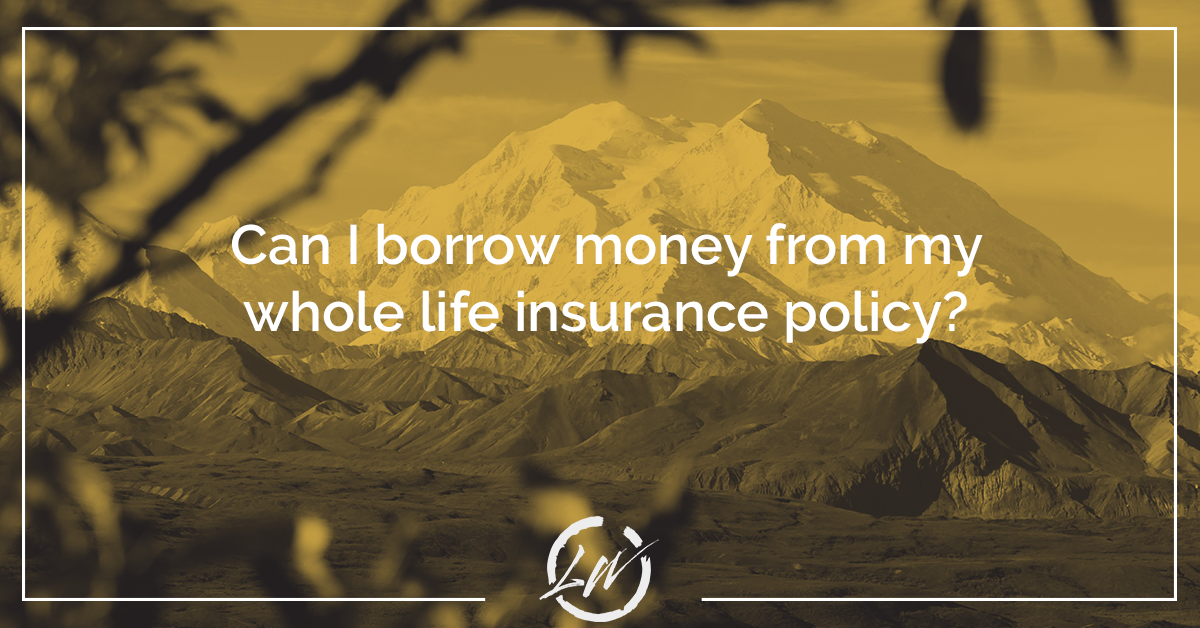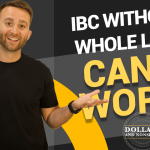If you are new to infinite banking, you have likely heard that it allows you to become your own banker by using and borrowing money from your policies. But some may wonder how this works. And what kind of policy is needed to do this. This article will answer these questions and further explain the ins and outs of borrowing money from life insurance policies.
What type of life insurance policy should you use?
One of the most common types of life insurance people buy is term life insurance. This policy lasts for a pre-set period. Because of this, it is often cheaper, but policyholders are limited to waiting for death to have access to their money. Therefore, term life insurance does not have cash value, so policyholders cannot borrow money from it. However, this is possible to do with permanent life insurance.
Permanent life insurance is a blanket term used for policies that last for the duration of the holder’s life, making them more expensive upfront. However, with the more considerable cost comes features that allow policyholders to have more control over their money.
Common types include variable, universal, and whole life insurance. However, certain ones are better suited for borrowing.
Cash value can only be invested into sub-accounts (e.g., equities, bonds, or indexes) available to the policy with variable life insurance. Holders can borrow from this type of policy, but cash value depends on the sub-accounts performance. Therefore, the cash value may not be maximized.
It is possible to borrow from universal life insurance as well. Like variable life insurance, cash value increases by investing funds into indexes (or keeping it within the policy to earn a low, fixed rate of return). Therefore, the value is also dependent on the performance of the indexes.
Whole life insurance, particularly dividend-paying whole life insurance, offers ideal circumstances for borrowing against the policy. Unlike the previous types, growth is not dependent on the performance of accounts. Instead, there is a fixed benefit that continues to grow for the duration of the policy. Cash value also grows tax-free, and you can borrow against what you have paid into it. The growth of the policy is also not dependent on the IRS or the federal government.
How to borrow money from a whole life insurance policy
Purchasing a whole life insurance policy typically involves a larger initial fee and higher premiums. These fees allow for more financial control and security; however, it is common to wait several years until there is enough cash value in the policy for what you need.
How these policies work is that policyholders pay monthly premiums, and the amount paid is more than what is needed for the death benefit and goes to other fees such as administration fees. The rest of the premium payment remains as cash value. Additional cash value can be added by paying more than the premium payment or through participating whole life insurance.
There are two common types of whole-life insurance – non-participating and participating. As the name suggests, non-participating insurance policies do not participate in investment activities. Policyholders still have a guaranteed rate of return and cash value-added, but the growth will not exceed what is provided from the premium payment.
Growth through dividends
Participating whole life insurance allows for additional growth through dividends. When a corporation earns a profit or surplus, a portion of this is shared with members or shareholders as a dividend. Purchasing dividends allows the cash value to grow more substantially, but it is a higher risk, not guaranteed, and may involve higher premium rates.
Policyholders can also add benefits through paid-up addition riders. The money received from dividends can be used to buy additional coverage, which will provide more potential for growth.
Essentially, the first step towards borrowing from a whole life insurance policy is to purchase it and accumulate cash value. Cash value is guaranteed in the initial policy but can be improved through dividends and paid-up addition riders.
Once enough cash value has accumulated in the policy, it can be borrowed against as the policyholder sees fit. However, a loan cannot be taken out that exceeds the cash value within the policy. Nonetheless, policyholders can take out what they need, at any time, and pay it back whenever they would like to. Still, there are some stipulations when doing so.
When a loan is taken from a policy, it is expected to be paid back with interest. However, interest rates are often lower than that on a bank loan or credit card. Additionally, the policyholder is the one capturing the interest. Moreover, there is no additional monthly payment.
Although there is freedom when borrowing and paying back, policyholders are expected to do so reasonably quickly. Interest will continue to accumulate until the loan is paid, so taking too much out without paying some back puts the policyholder at risk of exceeding the cash value. If this happens, the policy will lapse. Nonetheless, many insurance companies offer options and opportunities to prevent this from happening.
Overall, a whole life insurance policy can be a great tool to provide more control over one’s money. However, there are some pitfalls. First, policyholders must invest a large sum to purchase the policy and keep up with the premium cost to get these benefits. It is also likely to take years before borrowing is possible. Additionally, taking out money from the policy when alive can reduce the death benefit down the line (if it is not paid back).
Moreover, not paying it in a timely manner can cause the policy to lapse if not careful. Finally, borrowing from a life insurance policy may be complex for people not in the financial field. Policyholders must fully understand how it works and how to maintain it for it to be successful. Nonetheless, there are many resources and professionals to help walk you through the process. And doing so can be beneficial in the long run.
Why borrow from whole life insurance policies?
A whole life insurance policy has a guaranteed rate of return. The cash value grows tax-free, and there are additional opportunities for growth through dividends and paid-up addition riders. In addition, policyholders do not need to wait until death to access the money, so they can spend money while making money.
These are all great benefits; however, one of the most significant ones is allowing for more control over finances. The policyholder has complete ownership with whole life insurance instead of a third-party institution. This means they have control over all investments and flexibility to cater to personal needs.
Learn more about borrowing from a whole life policy
The Living Wealth team is there to guide you through your journey to financial freedom. Our website is filled with great infinite banking resources to get you started, and our team of experts is there to help you every step of the way. Here are some handy learning resources that you can access to get your questions answered:
- Podcast episode about borrowing from a whole life policy
- Our free infinite banking concept beginner’s course
- Our free infinite banking ebooks
- Read our blog
- See our training videos
- Book a free call with our infinite banking experts
- Subscribe to our infinite banking podcast called Dollars and Nonsense.






